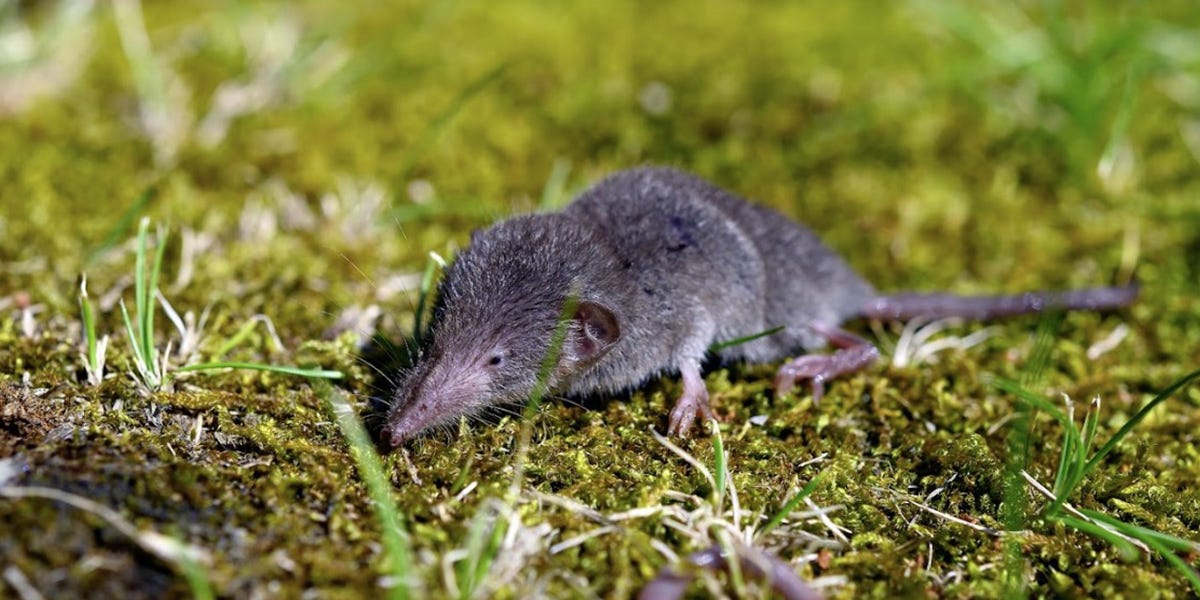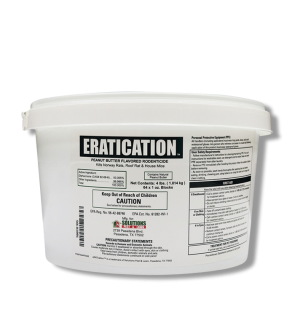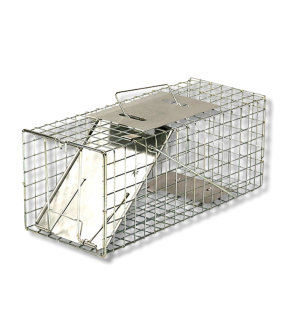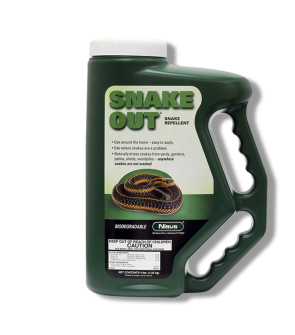Shrew Control
Most Effective Products
Shrew Control: How to Get Rid of Shrews
This DIY guide contains information and suggestions to help decrease the appearance of shrews on your property. Follow this guide and use the recommended products and we guarantee 100% control of shrews. When following these guidelines, State and local laws are still present and must be followed. It would be best for homeowners to visit with their local animal control office or state website to visit proper rules and regulations associated with the control of shrews.
Although shrews are commonly mistaken for mice, they are insectivores not rodents. Meaning they feed on a variety of insect and garden pests such as caterpillars, spiders, earthworms, centipedes, slugs, sowbugs, pillbugs, and snails throughout the year since they are non-hibernating pest. They may also feed on pest smaller than them like mice, snakes, and birds. While this may sound beneficial the shrew has a vigorous appetite and must eat every 2 to 3 hours to keep up with its metabolic rate.
To satisfy their large hunger the shrew digs a small hole in the pathways and tunnels already created by the American shrew mole, mole, voles, and sometimes mice. Most species of shrews are extremely territorial meaning that one pest is often invading your property. Regardless of their low population rate it only takes one pest to create significant damages to your turf and plants. The shrew also posses toxic saliva to help paralyze small insects and animals, which may cause irritation to a homeowners skin or lead to a serious infection if bitten.
Shrews are solitary pests that are aggressive by nature and may harm homeowners if contacted. Though outdoor pests, shrews sometimes invade homes creating structural damages from their gnawing activity to foul-smelling secretion's. Our DIY shrew treatment guide below contains helpful information and product recommendations for complete shrew elimination from your yard.
Identification

Before proceeding with treatment, you will need to make sure that the pest infesting your yard is a shrew. Careless identification can lead you to using the wrong treatment approach, which may prove to be ineffective leading to a waste of time and finances. Below you can find the list of identifying characteristics that shrews have:
- Small in size measuring between 3 to 5 inches in length. Bodies are slender, but yet plush-like in appearance.
- Typically shrews are grey or brownish in fur coloration with a white underside across its stomach and against the side of its legs and paws.
- Compared to rodents, shrews have a longer and narrow head. They also do not possess a pair of incisor teeth like rodents, but rather pointed teeth for chewing their prey. Ears of shrews are relatively small to the point of being non-evident then that of mice.
- Five clawed toes on their paws for light digging. Paws and feet are smaller and more narrow than moles and closely resemble that of mice. The exception is that mice have four toes while shrews have five. Shrews are able to move very quickly across various terrains and surfaces.
- Like moles, shrews have very small black eyes, long movable snout, small ears. In contrast to moles, the teeth of shrews are more pointed for hunting insects and small mice, snakes, and other shrews.
Use the image and description above to confirm that are dealing with a shrew on your property. If unsure, then contact us with a photo of the pest or their damage through phone, email, or in person at one of our store locations.
Inspection

Once you have confirmed that are facing a shrew infestation, you can proceed with inspection. During this phase, you will determine where the shrew is most active and the conditions allowing the pest to thrive. This will help you determine where to focus your treatment applications without wasting product material and time.
Where to Inspect
Shrews are mainly outdoor pest, but will invade homes if there is little food sources or cooler weather. This pest prefers to live underground beneath bushes, trees, hedgerows, bushy or wooded areas, gardens, and in abandoned burrows from small rodents, moles, and voles. Inside of homes the shrew will dig holes in the basement of houses and in-between the gaps of your homes foundation.
What to Look For
Shrews are active throughout the year during the day and night to consume enough food for its fast metabolism. They are not tunneling pest meaning they will dig various small holes throughout pathways already created by mice, voles, and moles. The pathways appear as tunnels in the grass. These holes can be found above ground and underground measuring 1 inch in diameter.
These pests do not feed on plant roots, but they can damage desired flower, shrub, turf, and tree roots as they dig for insects.
Inside of homes be aware of pungent secretion odors that are almost as strong as a skunks. A shrews droppings are small, dark brown to black colored with a corkscrew-shape. Shrews will also gnaw on electrical wiring and corners of wood surfaces to mark their territory. If cornered or afraid, then shrews can make themselves present by attacking you or sometimes your pets. They mostly come inside homes that have birds and pets as seeds and other pet food is available. Shrews may also feed and attack caged birds.
Treatment
Once you have confirmed shrew activity, you can proceed with treatment. Before beginning any type of pesticide application you will need to wear the appropriate personal protective equipment (PPE) such as gloves to protect yourself against diseases, infections, and contact with shrews and chemicals.
Though shrews prefer to live alone, they will tolerate other members of its species during the breeding season from May to September. For total shrew control, we recommend removing food sources and trapping at the beginning of April to limit shrew activity and populations.
Step 1: Set Solutions Rat and Mouse Bait Station Outdoors

Solutions Rat and Mouse Bait Station is an easy to use tamper-proof bait station to hold rodenticide products for multiple species of rat and mice. This product should be used in outdoor locations around the perimeter of homes, underneath structures, and other areas where there is coverage for rodents to travel. Place this product with a gloved hand at least 15 feet apart from other Solutions Rat and Mouse Bait Stations.
Use Eratication Rodent Bait within the Solutions Rat and Mouse Bait Stations. Eratication Rodent Bait is a poisin bait formulated with peanut butter aromas and seeds to entice the rodent to ingest the material. Once the rodent swallows the product they will perish within 5 to 7 days.
To set, open the Solutions Rat and Mouse Bait Station with the included key. Insert 4 to 6 Eratication Rodent Bait on the metal rods inside the bait station then close it until it snaps shut.
Step 2: Broadcast Supreme IT

Supreme IT is a powerful liquid insecticide that eliminates more than 70 types of insects such as spiders, centipedes, sow bugs, and pillbugs. This product also produces a long-lasting residual effect that repels and eliminates pests for up to 90 days after the first application.
Determine how much Supreme IT to use by calculating the square footage of the treatment area. To do this, measure the length and width of the treatment site in feet and multiply (length X width = square footage). Apply a general rate of 1 oz. of Supreme IT per gallon of water per 1,000 sq. ft. within a hose-end sprayer for large applications.
To perform a hose-end sprayer application, you will need to turn off the water hose pump and control valve on the hose-end sprayer. Remove the reservoir from the hose-end sprayer and pour in the appropriate amount of Supreme IT and fill with enough water to treat the entire treatment area. Reattach the nozzle to the hose-end sprayer and spray and turn on the water hose. Push forward on the control valve to relase the product material in a swath motion to cover the top and bottom of folaige leaves.
Step 3: Perimeter Treatment with Snake Out Repellent

Shrew infestations can suggest their is a current snake infestation within your property. To remove current or future snake populations you can use a granule repellent product such as Snake Out Snake Repellent. This product is formulated with natural ingredients that will not harm the snake, but irate their sense of smell and touch helping to push the pest out of treated areas.
We recommend performing this step when rat and mice populations have been eliminated since snakes feed on these type of pests. Once there is no signs of rodent control, determine the square footage of the treatment site by following the same formula in step 2.
Once you calculated the square footage of the treatment area, lightly sprinkle out a band 6 to 8 inches wide around the foundation of your home, shrubs, garage, shed, and perimeter of property. You may use a hand spreader or apply Snake Out Snake Repellent from the container or through a hand-spreader.
Remember if there are snakes within your property they may become trapped if a perimeter treatment is performed. Wait until snake activity is low or snakes are no longer present before applying a perimeter treatment around the edge of your yard.
Step 4: Place the Solutions Humane Live Trap

Once these food sources are removed or activity is low you can then use a small Solutions Humane Live Trap for the trapping of shrews.
Place the small Solutions Humane Live Trap in areas of high activity and near burrowing holes, which can be indicated by the amount of droppings or seeds near the site. Be sure to place the trap on an even surface and not directly above the hole as the shrew will avoid the area.
Once the treatment area is determined you can then set your Solutions Humane Live trap. With a gloved hand push on the door lock and lift the door plate. Keep the door plate lifted while pulling the trigger arm forward to set it. You will know the Solutions Humane Live Trap is set when the trigger arm hook catches the door.
Once set, carefully place bait high in aromas such as peanut butter with seeds and pieces of bacon or hotdog behind the trigger plate. This placement will encourage the shrew to step on the trigger plate and close the Solutions Humane Live Trap.
Trapped shrews can bite so it may be best to contact your local animal control office for the relocating and removal of the pest.
Prevention

Once shrews have been removed from your property, you do not want to experience another infestation. Preventative measures should be put into place to make the conditions of your yard unappealing to shrews. Listed below are some preventative measures to take against shrews:
- Shrews like to invade and dig current holes and grass tunnels created by other burrowing pests. Mow your turf when it has reached 3 inches in height to eliminate these conditions. Refill holes with dirt or rock to block access to previously created tunnels.
- Trim overgrown plant leaves and branches to prevent moisture buildup and suitable habitats for insects.
- Seal any gaps around the foundation of your home with caulk and copper mesh to prevent shrews from coming inside. Repair electrical damages and moisture issues within homes to lessen territory mark of shrews.
- Rake up fallen leaves, branches, and other plant materials to deter insects and shrews from feeding and creating homes.
- Reapply Supreme IT on a quarterly basis throughout the year to limit insect populations for shrews to feed upon.
Key Takeaways
What Are Shrews?
- Shrews are an abundant and widespread pest throughout the United States that resemble that of a mouse, but are more aggressive in nature.
How to Get Rid of Shrews
- Eliminate shrew populations by eliminating their sources of food through applications of Solutions Rat and Mouse Bait Station inserted with Eratication Rodent Bait, Supreme IT, and Snake Out Snake Repellent. Once these conditions are removed you can then use a small Solutions Humane Live Trap.
Preventing Shrew Reinfestation
- Prevent future shrew invasions through quarterly applications of Supreme IT, clearing up plant litter, regular mowing, and sealing off-entry points into homes and abandoned tunnels of burrowing pest.















































































































































































































































































































































































































































































































































